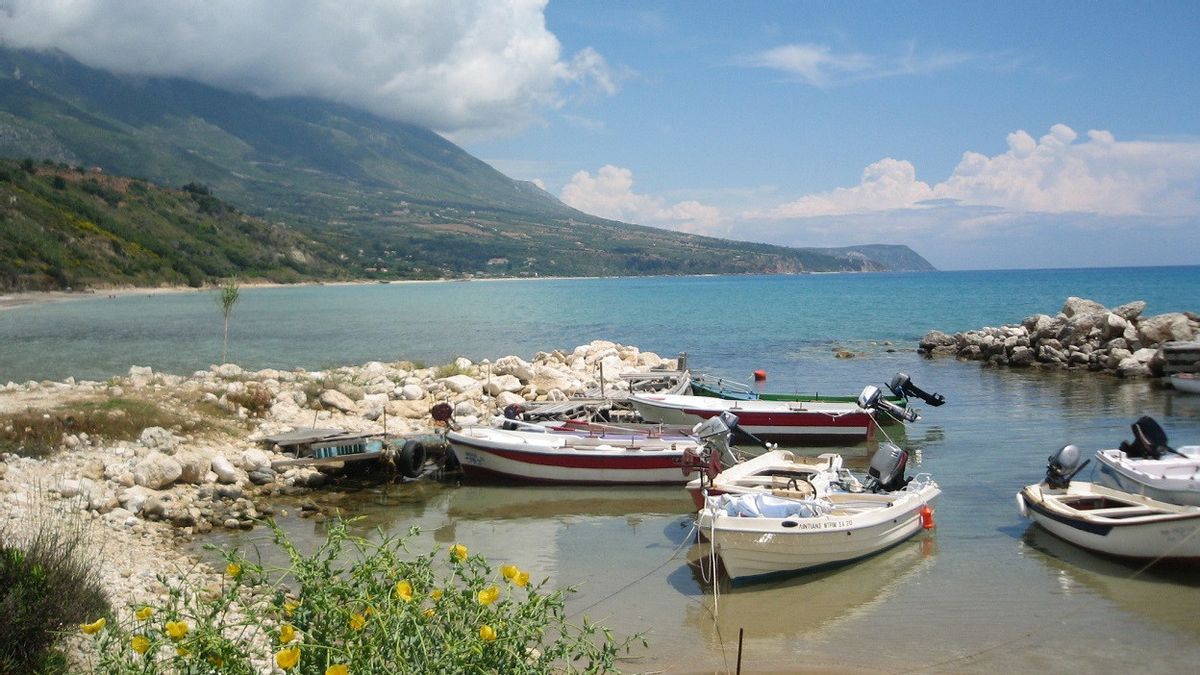JAKARTA - The United Nations cultural agency UNESCO (United Nations Educational, Scientific and Cultural Organization), has designated eight more geoparks around the world as it celebrates its 40th World Heritage Day.
This year, two of the new sites established are in Latin America. Meanwhile, the other six sites are in Europe, with Luxembourg and Sweden having geoparks for the first time.
To be a geopark, an area must have an outstanding geological heritage, use it to promote and benefit society through conservation and sustainability.
"It's more than just a label. This is an acknowledgment of a geological site of international value,” said Kristof Vandenberghe, UNESCO head of Earth Sciences and Geoparks, citing The National News, April 18.
"You can't put it all in value for money. Sometimes people rediscover and recognize again how connected they really are to their landscape," he continued.
In Brazil, Serido Park and the Southern Canyons Pathways, Caminhos dos Cânions do Sul, have been given special protection.
Caminhos dos Cânions do Sul is characterized by the Atlantic Forest, one of the richest ecosystems on the planet in terms of biodiversity.
"This site features the most impressive gorge in South America, which was formed by the unique geomorphological processes the continent underwent during the breakup of the supercontinent Gondwana about 180 million years ago," UNESCO said.

"Serido Park witnesses the last 600 million years of Earth's history and protects one of the largest scheelite mineralizations in South America, an important tungsten ore, as well as basalt flows resulting from volcanic activity during the Mesozoic and Cenozoic eras."
"This biodiversity defines a large part of the region's unique biodiversity, especially that characterized by Caatinga. It is Brazil's only exclusive biome, meaning that much of its biological heritage cannot be found anywhere else on the planet."
Shifting to Europe, Salpausselk in Finland has been added to the list. This area contains hundreds of lakes and mountains made up of sediment deposited by glaciers.
Meanwhile, Germany's Ries Parkland in Bavaria, the site of a meteorite strike 15 million years ago, was also included in the list. It is the best-preserved crater in Europe, the most intensively studied impact structure of nearly 200 craters worldwide.
In western Greece, the Kefalonia Island complex of Ithaca, consisting of caves, sinkholes and underground streams, has become a geopark. The site, which is the most tectonically active region in Europe, has literary significance, as Kefalos and Ithaca are referred to in the Odyssey as the homeland of Ulysses, the hero of Homer's poetry.
SEE ALSO:
They are also home to prehistoric Hellenistic and Roman monuments, medieval castles, Byzantine and post-Byzantine monasteries, as well as traditional settlements.
Luxembourg's rural Mëllerdall area has been added, "forming one of the most spectacular sandstone landscapes in western Europe and has been a tourist attraction since the late 19th century", Unesco said.
Here there is The Carpathian Bend Area in Romania, which shows 40 million years of geological history, and Platåbergens in Sweden, which consists of 15 flat-top table mountains, have been defined.
Some of Sweden's most interesting historical discoveries have been made in this area, including Sweden's first known stone church, built by Christian Vikings in the early 11th century.
It is known, due to coronavirus restrictions, UNESCO was unable to receive applications from Asia, Africa or the Middle East in time for this year's designation, but is looking at projects for the creation of geoparks in these areas.
The English, Chinese, Japanese, Arabic, and French versions are automatically generated by the AI. So there may still be inaccuracies in translating, please always see Indonesian as our main language. (system supported by DigitalSiber.id)

















